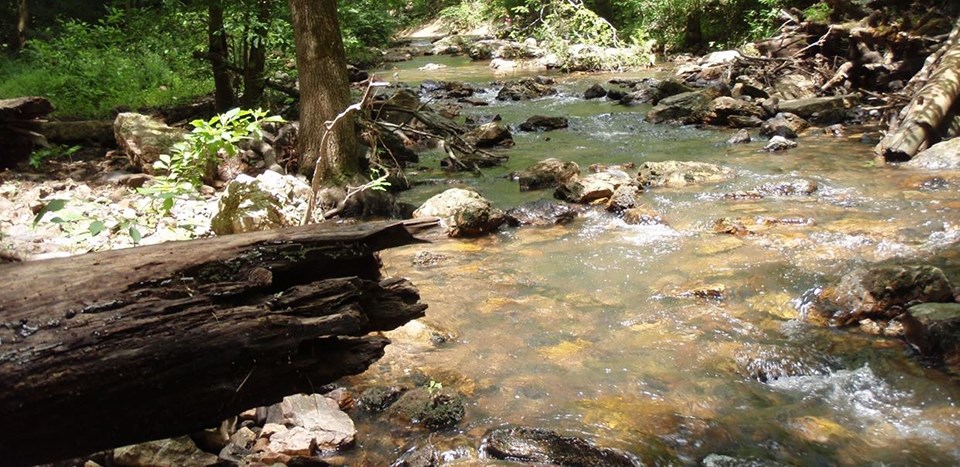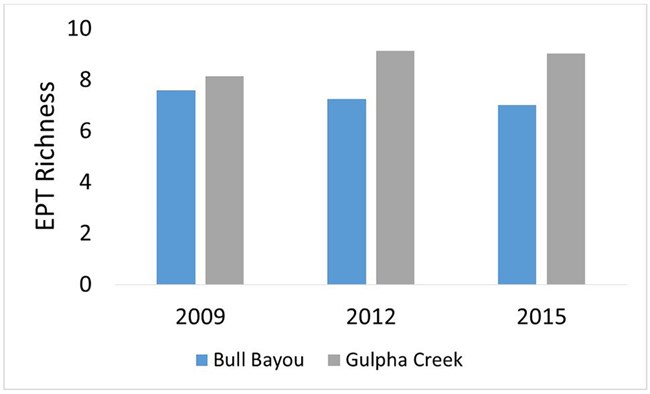Last updated: October 8, 2020
Article
Aquatic Invertebrate Monitoring at Hot Springs National Park

NPS-Photo

NPS
Potential threats to stream quality occur in the watershed. For instance, a landfill in the upper Bull Bayou watershed poses a risk for pollution. Urbanization and other land practices in the Gulpha Creek watershed could also lead to pollution. This presents managers with a problem, what should we do? Maintaining and widening the areas near streams can help protect the aquatic life. This would decrease chemical runoff and sediment from entering the stream. These areas could also be restored by planting native flora, which would help with erosion.
View the Full Report.(pdf)
Learn more about the Heartland Inventory & Monitoring Network.
Data in this report were collected and analyzed using methods based on established, peer-reviewed protocols and were analyzed and interpreted within the guidelines of the protocols.
Learn more about the Heartland Inventory & Monitoring Network.
Data in this report were collected and analyzed using methods based on established, peer-reviewed protocols and were analyzed and interpreted within the guidelines of the protocols.
